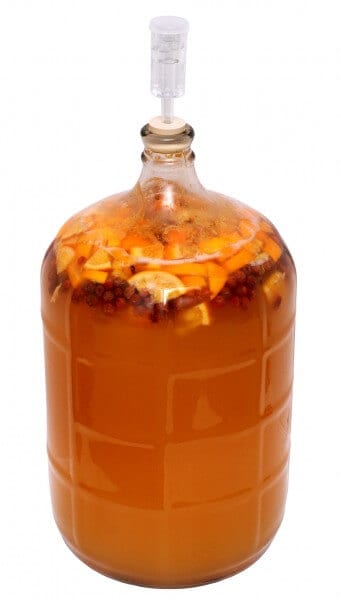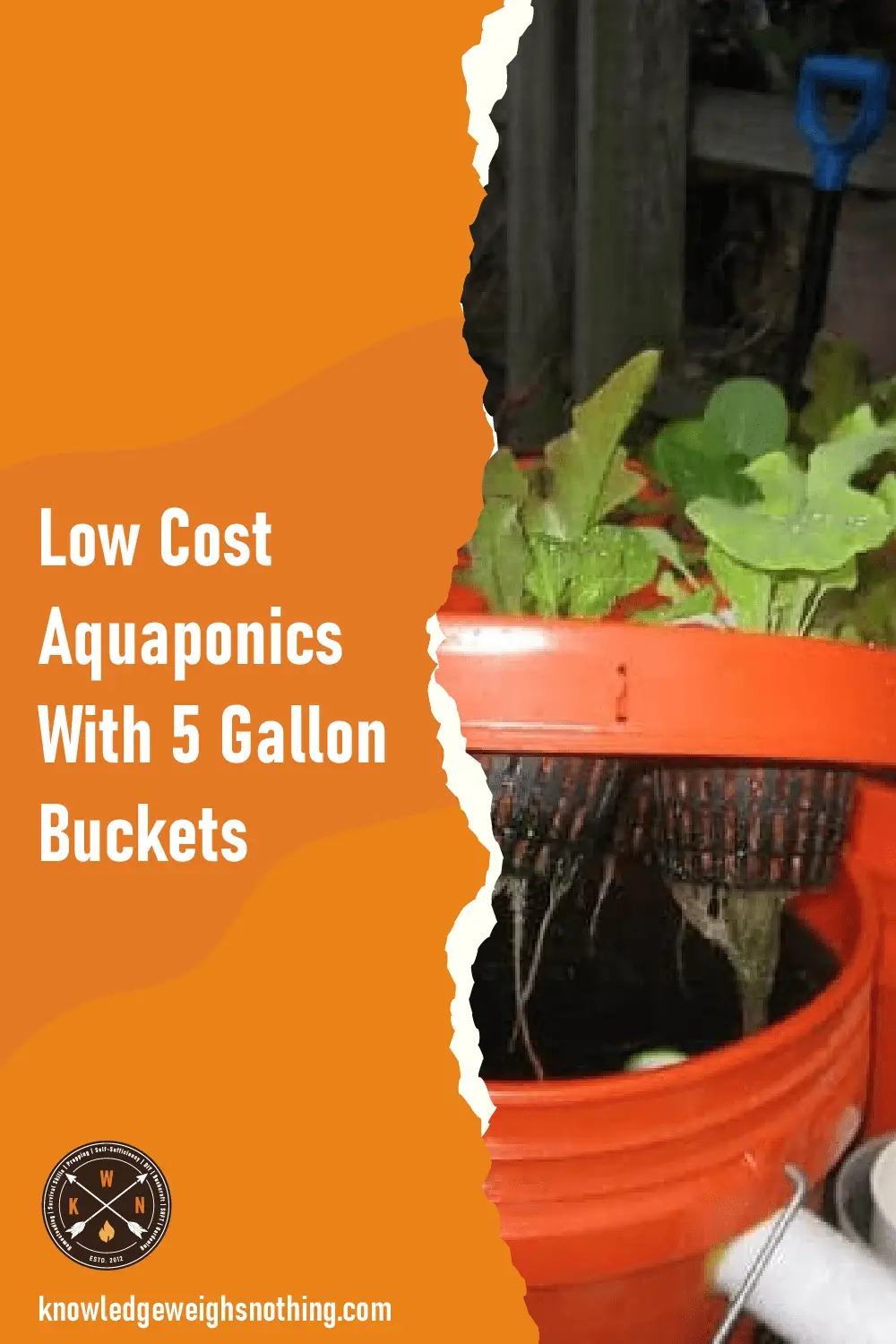
Mead makes for one of the oldest alcoholic drinks in history and, using a basic recipe that consists of just honey, water and yeast, it can also be considered as one of the simplest. That said, for the many that may have tried to make mead and suffered some form of a misstep, this drink can also seem like a frustrating mix to get right. So with that in mind, here is a complete introduction to mead, and five solid recipes for the beginner to get to grips with what this wonderful homebrew can offer. If you are interested in making mead, you may also be interested in our moonshine recipe post!
Table of Contents
ToggleMead: The world’s most varied drink
From being completely flat through to being super sparkling; from being crisp and dry through to seriously sweet and from straight-up mead flavour through to being fruit flavoured, it seems that mead may very well be the world’s most varied drink. So, after you’ve gotten to grips with the five recipes within this article there is a whole world of other recipes to try out, so…. let’s get started!
Recipe One: Dry/Semi-Sweet Mead
This recipe produces a mead that strikes the balance between dry and sweetness just right and makes for an excellent first-timer recipe.
Ingredients that you’ll need
- 14.5 Pounds of Honey
- 4 Gallon soft water
- 10 Grams of Fermaid-K
- 14 Grams Diammonium phosphate (DAP)
- Liquid yeast
- 5 Grams of calcium carbonate
- ¼ Teaspoon of potassium meta-bisulphite
Equipment that you’ll need
- Primary food-safe fermentation bucket
- Hydrometer
- Pure oxygenation system OR an air pump and a sterile air filter
Dry/Semi-Sweet Mead: Step by step
Step One – Soak your honey in water for 15 minutes
This will help loosen the honey from its original thickened state.
Step Two – Add in one gallon of high-quality soft water (this needs to be no more than 150ppm TH)
You should also use a sanitized fermenter.
Step Three – Add in the honey and stir until dissolved
Step Four – Add in a further 3 gallons of room temperature soft water
At this stage you should take a gravity reading with a hydrometer, writing it down in your logbook.
Step Five – Add your Mermaid-K and Ammonium phosphate (DAP) to the mix
Step Six – Add your liquid yeast to the must
Before undertaking this step be sure that the yeast has warmed to room temperature.
Step Seven – Add your calcium carbonate
Step Eight – Oxygenate the must
You do this by either splashing or shaking the mix (which, to be honest, if pretty ineffective) or through a professional pure oxygenation system (alternatively you may opt for an air pump and a sterile air filter).
Don’t oxygenate the mix for any longer than 60 seconds if you’re working with pure oxygen. If you go for the aquarium pump then you can leave it to run for around 30 minutes.
Step Nine – Place your lid on
Ideally, you’ll be using a lid airlock, and you should fill the bucket with water or vodka to the airlock’s fill line. The fermentation should take place at between 55 to 75 degrees Fahrenheit.
Step Ten – Stir each and every day
Once the must has used up around a 1/3 of its sugar add in about 5 grams of Fermaid-K and 7 grams of DAP.
Step Eleven –Keep an eye on your mix and somewhere between 7 and 20 days it’ll be ready for the next step
Your must is ready when the activity within it slows down to around 1 bubble every two minutes or less. Once this happens you should take a gravity reading, which should be 1.018 or below). Then go ahead and siphon your 5-gallon carboy and add into the mix ¼ teaspoon potassium meta-bisulphite (which should have been hydrated with 1/8 of a cup of room temperature water).
Step Twelve – Allow to rest for 3 to 4 weeks and then rack one more time
Recipe Two: The fastest, most efficient way of making mead (kind of)
So the first recipe may seem a bit intimidating to some, so here is a simpler mead recipe for those who want to make mead fast! However whilst it’s super quick to mix together, the brewing time still takes a couple of months.
Ingredients that you’ll need
- 1 Gallon of Spring Water (room temperature)
- 3 Pounds of honey (this needs to be pure)
- 1 Pack of Yeast
- 1 Box of raisins
- 1 Orange
Equipment that you’ll need
- Water jug
- Rubber band
- 1 Balloon pack (these should be large enough to cover the mouth of the water jug)
The fastest, most efficient way of making mead: Step by step
Step One – Pour half of your water into a container
Step Two –Slice up your orange into 1/8’s
Then place the slices, honey, twenty-five raisins and the yeast into a jug. Pour a little water back into the jug so there’s around a couple of inches space at the top. Put the cap on and give it a good shake (ideally for around five minutes)
Step Three – Pinprick one of the tops of the balloons and remove the cap from the water jug
You should then place the balloon over the mouth of the jug; the idea behind this is that the gases from within will fill the balloon, so place a rubber band around the jug mouth to secure it.
Step Four – Leave to rest on the side and keep an eye on it
After around twenty-four hours you’ll see the balling being to inflate, this then means that your yeast is busy working on transforming the contents of the jug into delicious mead wine! If it gets too large you should prick another hole into it… you want to avoid it bursting.
Step Five – After two weeks…
After around two weeks you should see that the balloon has gone limp, this will then mean that fermentation has finished.
Step Six – After 2 months…
Following two months you should notice that the mix has become a whole lot clearer and is now ready to serve!
Recipe Three: Super-fast mead (otherwise known as cheat mead!)
OK, so for those who really are impatient, here we have a recipe that takes just two weeks, rather than the months that the other recipes require.
Ingredients that you’ll need
- ½ Gallon of cheap white wine
- 1 Pound of honey
- 1-2 cloves
- Pinch of cinnamon and nutmeg
Equipment that you’ll need
- Saucepan
- Jug
- Corkscrew (for the wine)
- Spatula
Super-fast mead (otherwise known as cheat mead!): Step by step
Step One – Empty the wine and honey into a large saucepan
Heat this up gently being sure to stir the mixture frequently until a scum forms on the top of the mixture.
Step Two – Scrape the scum off and chuck it away
Step Three – Pour the liquid into your wine bottle
Step Four – Place the cap on and leave the mixture to rest in a cool, dark space for a minimum of two weeks
Step Five – After two weeks…
Your mix should be ready to drink after just two weeks, however, the longer that you can manage to leave it, the stronger it will be!
Recipe Four: Metheglin (Flavoured mead)
Metheglin is the name for flavoured mead, and it’s this stuff that can date its roots back to a time before even wine existed. Unfortunately, Metheglin fails to get much attention nowadays, so I wanted to include it here for those who want to mix up mead with a difference.
This drink hails from Wales in the United Kingdom, with the Welsh word ‘meodyglyn’ being translated over time, as such many of the recipes that are out there use traditionally English sourced herbs, with a lot of recipes being focused upon serving up as an excellent accompaniment to Lamb.
Possible Metheglin flavours
Metheglin can and very much has been created from all sorts of ingredients to create practically every flavour going. Documented in history are recipes that use the following flavourings: watercress, fennel, liverwort, marshmallow roots, scurvy grass, cloves, borage, marjoram, ferns and flowers.
Ingredients that you’ll need
- 3 Pounds of runny honey
- 1 Gallon of water
- 2 Tablespoons of chopped rosemary
- 1 Dessertspoon of thyme leaves
- 6 bay leaves
- 2 lemons – You want both the juice and zest
- ¼ Teaspoon – Grape tannin
- Yeast nutrient (be sure to follow the instructions on the yeast packet)
- White wine yeast (again, follow these instructions to the letter)
Equipment that you’ll need
- Large saucepan
- Muslin cloth
- Demi-john
- Food safe fermentation pot
Metheglin (Flavoured mead): Step by step
Step One – Place the water in a large pan and heat up
Once boiling you should pour in the honey and wait until it’s dissolved; boil for ten minutes, skimming off any scum that may form on the surface.
Step Two – Turn off the heat
Once the heat is off you can add in your herbs, grape tannin, lemon zest and lemon juice. Then you can leave the mixture to rest, being sure to cover it over – leave to cool.
Step Three – Pour the mixture into your sterilised fermenting bucket
Once in the bucket, you can add in your yeast. Once well mixed allow to ferment for a period of around three days.
Step Four – After three days…
Pour your mix into a demi-john, being sure to filter the mix through a muslin cloth.
Step Five – Fit on a bubble trap/airlock and leave to rest for two months
 Melomel mead
Melomel mead
Recipe Five: Making Melomels (otherwise known as fruit-filled mead!)
Recipe four is pretty flexible as far as flavourings and herbs go, but if you want a mead recipe designed specifically for fruit, then this is it. However, rather than re-running through the steps of the other mead recipes, this instead provides guidance on how and when you should add fruit to any traditional mead recipe.
Melomels: Common fruits flavours
The official term for fruit flavoured mead is ‘Melomels’, and is commonly brewed with the following combinations (with each having a specific name for its flavour):
– Cyser-is: Honey and apple juice/apple cider
– Capsicumel: Chile peppers
– Morat-is: Honey and mulberries
– Omphacomel-is: Honey and verjuice (verjuice is the juice from unripe grapes)
– Perry-mead: Honey and pears
– Rhodomel-is: Honey and rose hips
– Other fruits that can be used: Other fruits that are used within this recipe can be anything of your choosing and are simply named with the fruit placed before ‘Melomel’, so you can have apple melomel, cherry melomel, orange melomel or strawberry melomel.
Adding your fruit: Stage by Stage
Regardless of what fruit or flavouring you choose to use there are many stages at which the fruit can be added. Each will make for a different end taste of the fruit, so this really is a recipe that benefits from experimenting with. You may even wish to make up multiple batches so you can add the fruits at varying stages with one brew.
Stage One: Adding your fruits and flavourings during primary fermentation
Adding fruits at the primary stage of fermentation is a particularly common way of making melomel. This isn’t so surprising given that it provides for certain benefits, such as the early introduction of nutrients that the yeast can work with to create a mixture with a regulated ph. What’s more when adding fruit into the mead mix early on you’ll find that the mead ferments more quickly.
Lastly, you’ll also find that this method still retains the flavour of the fruit, as the majority of the volatile aromatics will be gassed off.
Stage Two: Adding your fruits and flavourings during secondary fermentation
When adding later on most will choose to mix in the fruit when the mead is almost fermented completely. This is, once more, something that benefits from experimentation as everyone has varying tastes.
The one drawback of adding at this stage however is that is the fruit will take a longer time to blend in, and may lengthen the overall brewing time. This can additionally make it a little more difficult to judge the exact right time to bottle up.
Stage Three: Adding your fruits and flavourings just before bottling
This latter option of adding in the fruit may be the most straight forward, although you will need to be absolutely sure that the yeast is dead (e.g. the must have stopped producing bubbles) before adding the fruit, as you otherwise could end up exploding bottles!
You can be sure of this by sulphating the must, which requires the addition of potassium sorbate, followed by the addition of the various fruit juices or extracts to the bottling bucket.
A further way of avoiding exploding bottles is by bulk aligning the mead for a particularly long time, and then follow this with a couple of cycles of racking up. This may lengthen the process further, but it does mean that you can be sure that the must is safe to bottle.
Fruit: How much should you add to your mead mix?
The amount of fruit that you should ideally add differs fruit by fruit (which makes sense, given that fruits feature drastically differing strengths of flavour). So here’s my guide on how much fruit makes for the perfect mix.
– Cysers-Apples: 4 Gallons of apple juice or cider (primary stage).
– Cysers-Apples (strong): 3 cans of apple juice concentrate (16 oz.) (secondary stage).
– Blueberry Melomel: 7 to 10 pounds of blueberries (secondary stage).
– Blueberry Melomel (strong): 2.2 pounds per gallon (secondary stage).
– Cherry Melomel (strong): 7-8 lbs of cherries (secondary stage).
– Citrus Melomel (medium): 6-8 lbs (secondary stage 1.2-1.6 lbs/gal).
– Citrus Melomel (strong): 1.8 lbs/gal.
– Melon Mead (medium): 6-8 lbs of pulp (secondary stage).
– Melon Mead (strong): 1.8 lbs per gallon.
– Peach Melomel (medium): 8-12 lbs (secondary stage – 1.2-2.4 lbs/gal).
– Peach Melomel (strong): 2.5 lbs per gallon (secondary stage).
– Plum Melomel (medium) -Add 8-9 lbs to secondary (1.4-1.8 lbs/gal).
– Plum Melomel (strong): 2 lbs per gallon (secondary stage).
– Raspberry Melomel (medium): 5-7 lbs (secondary stage – 1-1.6 lbs/gal).
– Raspberry Melomel (very strong): 1.8 lbs/gal (secondary stage).
– Strawberry Melomel (medium): 8-10 lbs.
– Strawberry Melomel (strong): 2.2 lbs per gal (secondary stage).




